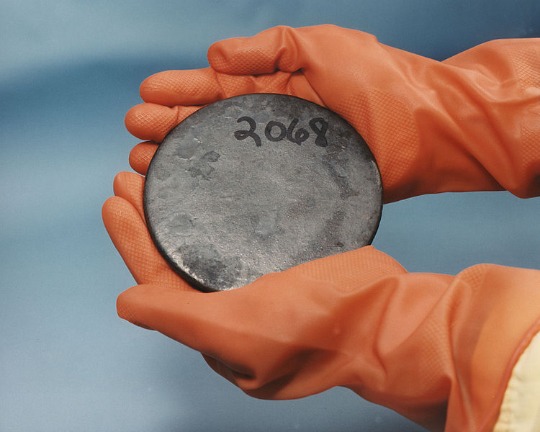On the prowl. A pod of killer whales explores Admiralty Bay for narwhal.
Credit: Gretchen Freund; Steven Ferguson (inset)
What do killer whales dine on in Canada's remote Arctic waters? "Whatever they can catch," local Inuits say, recounting harrowing observations of pods of orcas drowning adult bowhead whales, tossing narwhals as though they were soccer balls, and ripping apart beluga whales. Normally, such stories might be considered just anecdotes. But in an unusual collaboration, marine biologists have helped confirm the tales by talking to the hunters who know the whales best.
To gather observations of killer whales (
Orcinus orca), the world's top marine predator, two scientists working with an Inuktitut-speaking interpreter interviewed 105 Inuit hunters, who ranged in age from 30 to over 90 and live in 11 communities along the coastal edge of Nunavut, Canada's northernmost territory. The hunters' accounts proved to be "a gold mine," says Steven Ferguson, a marine biologist at Fisheries and Oceans Canada in Winnipeg who led the study. The vastness of the region, coupled with the low density of orcas, makes a traditional scientific study difficult. "It would take decades of work, with researchers identifying then following individual whales, to gain this kind of knowledge," says Ferguson, who, because the whales are so widely dispersed, has yet to see an orca in these Arctic waters.
Killer whales have been extensively studied elsewhere, particularly along Canada's west coast, where researchers have identified a resident orca population that eats only fish and a migratory population that targets only marine mammals, particularly gray whales. In the Antarctic, scientists have identified five types of killer whales, each having different habitat, prey preferences, and hunting strategies. Researchers have found a similar pattern among orcas in the Atlantic, tropical Pacific, and Indian oceans.
But "there was a complete vacuum in our knowledge of the ecology of killer whales" in northern Canada until this study, says Andrew Foote, a marine biologist at the University of Copenhagen who was not involved in the study. Since the Arctic sea ice is melting, orcas are moving into new regions, and scientists want to know more about their prey preferences and hunting behaviors. The hunters' information will help researchers better gauge how this apex predator is likely to affect other species, particularly those that are recovering from the effects of commercial whaling, such as bowheads, narwhals, and beluga whales.
According to the Inuit knowledge, the Arctic killer whales "are primarily mammal eaters," Ferguson says. None of the Inuit who were interviewed had seen a killer whale eating fish. Instead, 73 of the hunters had watched orcas killing ringed seals; 24 had witnessed them hunting and feasting on narwhal (medium-size whales characterized by their single, long tusk); and 17 had seen orcas ramming and drowning adult bowhead whales—animals that are more than twice their size.
The killer whales arrive in the eastern Canadian Arctic as the ice begins to recede in July, just as the other marine mammals begin giving birth to their calves and pups. When hunting, the orcas work in highly coordinated pods, "like wolves," the Inuit said, herding narwhal and beluga whales into deep water and circling them to keep them from escaping. The prey sometimes attempt to get away by fleeing into shallower water. This response is so striking—with waves of animals rushing toward shore—that the Inuit have a specific word for it: "
Aalirijuk," the fear of killer whales. Frightened prey might also try to hide in the ice, and the Inuit hunters have seen narwhal skewering killer whales with their tusks, sometimes killing their tormentors.
The study, published this month in
Aquatic Biosystems, comes at a time when, as the Arctic sea ice melts due to climate change, killer whales are moving into new areas in Hudson Bay, where even the Inuit have not seen them before.
Although the data are anecdotes, they are "valuable and very interesting," says Robert Pitman, a cetacean expert at the Southwest Fisheries Science Center in San Diego, California. "Killer whales are normally very careful about the way that they interact with live prey, and we almost never see or hear about the risks involved with hunting large mammals," he says. "Currently, there is considerable controversy within the marine mammal community about how successful killer whales are at taking adults of large whales. ... It seems pretty clear from Ferguson
et. al. that killer whales in the Eastern Canadian Arctic are adept at taking adult bowheads."
"It is an excellent example of the role that [traditional knowledge] can play in ... informing traditional science," Alan Springer, a marine ecologist at the University of Alaska, Fairbanks, adds in an e-mail. Researchers should also attempt to collect similar data in "northern Alaska and Chukotka, where climate change is likely creating opportunities for killer whales to exploit new seas," he says.
"We need a better understanding of the killer whales' role in this ecosystem to help with conservation and management," Ferguson says, noting that the local Inuit rely on the same species the killer whales like to eat. And two of these—the beluga and narwhal—are considered "near threatened" by the International Union for Conservation of Nature.






















